I worry about the potential trauma, memory, and psychological effects of the Coronavirus on my daughter. While I haven’t seen any symptoms yet, like problems sleeping, increased worrying, or unspoken stress, she will also be turning six soon, and will carry much of this stay-at-home, pandemic experience with her as she grows up. I have questions like, “How is she taking all of this in?” and “What can I do to help her through this experience.”
In this blog I begin by setting up how memory works differently for infants and kids than adults. An important reminder that while kids are resilient, some of them will be affected and show signs of PTSD long after the pandemic ends. To help our kids, I also go through three factors that will influence how your kid reacts to his or her stay-at-home reality. And last, 5 strategies to help you ensure you’re doing everything you can to help your kid through this experience.
How Memory Works in the Brain for Children and Adults
For us to know how to protect our kids from potential trauma, it’s helpful to understand how a potentially traumatic experience like the Coronavirus pandemic resides in our kids’ memory and potentially affects them after they return to school and their previous routine.
My earliest memories are at 3 years old, when my parents brought my brother home from the hospital. I can still remember peering over the side of the bassinet, feeling a mixture of relief that my mom was ok and awe that this, this was my brother.
Experts explain that for most people’s earliest memories begin around 3 or 4 years old. While some people do recollect memories about themselves as infants, most of us tend to forget those memories around age 6.
Adults we tend to create memories in our prefrontal cortex. The prefrontal cortex, responsible for our cognitive functions, also manages the medial temporal lobe and the hippocampus. In contrast to adults, a child’s memory is mostly worked out in the medial temporal lobe, which includes the hippocampus—the part of the brain responsible for memory, learning, and responding to stress.
While a child and adult can recall, say, how to solve a math problem, the facts related to solving a math problem for adults reside in the prefrontal cortex and for children the hippocampus. For this reason, researchers explain, brain activity is less consistent in children than adults. While adults and children may utilize these different parts of the brain when solving a math problem, the basic brain function is the same., When considering how your child is processing the pandemic differently than you, just know that adults will recall more of the contextual details than kids will.
Sensation and Reflection
While I’m not sure what percentage of the population has photographic memory, most of us don’t recall memories like seeing an image on Instagram or watching a video on YouTube. Memory doesn’t work like this. Instead we associate various details of an event, then store it.
So how do we pick which details to store? The details are divided into two types: sensation: the experience itself, and reflection: how we understand the experience.
Sensation: We first need to actually have an experience. When we experience an event like the pandemic we are constantly taking in information through our senses. What do we see, here, and feel? Some of these details will be stored in our memory.
Reflection: The second type of detail we take in are our feelings about the experience. Was the event good, or bad, or somewhere in the middle? Did the experience of the event, the sensational details, scare us, bore us, excite us?
For many families, kids have been home now for over a month. Every day our kids are taking in more and more sensory details, thus they are also all of the time forming thoughts and emotions about what they see, hear, and do.
It’s Not What Happened but How You Remember It
Experts explain that when we reflect on an event our bias and personality come into play. This is how we potentially tweak a memory, and as a result, how a memory can potentially change when we recall it.
One study found that adults who remembered having a close relationship with their parents as children were healthier and more showed fewer symptoms related to depression. Interestingly, the researchers concluded that it doesn’t matter what actually happened, but rather how we remember it, that determines the long terms effects of a traumatic event. In other words, if we can help our kids remember this experience at home in a positive light and remain optimistic, brain science tells us we can potentially minimize the long-term effects of the pandemic
Kids Are Resilient
Now that we understand how kids take in information, reflect on it, and store that information as the memory of an event, we can begin to work out how we can help our kids through this difficult time.
The good news is that most psychologists who work with kids believe children are resilient. There are many examples of how children have bounced back from traumatic moments in history. The Gulf War, the Great Depression, and Pearl Harbor are just a few that are cited as examples. From what we learned above, we also need to understand and remember that our experience as adults is not necessarily the same as our children are experiencing. A common factor in determining how well a kid responds to a traumatic situation like the Coronavirus pandemic is the support network he or she has during and after the crisis.
I know a lot of us are worried about our kids’ academics. And there’s good reason to, for many of us we don’t know when the schools will open again. But I truly believe our kids’ academics will bounce back. Give them a few months and they’ll be right back where they were. What kids can’t make up in a few months though is living in confusion and fear.
3 Factors that Determine How a Child Responds to Trauma
- Support Network – It probably goes without saying that if a child does not have a supportive network, the child is more likely to exhibit PTSD (Post Traumatic Stress Disorder) symptoms during and after the crisis. One study I read found that the kids in New Orleans who survived the 2005 Hurricane Katrina, but lost their home or a family member, showed signs of PTSD for several years after the hurricane.
- Proximity – A child’s proximity to a crisis is also a factor in how likely that child might be affected by the crisis. When it comes to the pandemic, a greater percentage of children in Delhi for example, will more than likely show signs of PTSD, than a child growing up in rural West Bengal.
- Pre-Trauma Stress Levels – A third factor is the stress level of a child before the crisis. For example, if a child is in a family that is not financially secure, he or she is more likely to exhibit PTSD during and after the crisis.
5 Strategies to Help Reduce the Stress on Your Kids
1. Role Models
A major factor that will influence how your child reflects on their Coronavirus pandemic experience will be how you react to the pandemic. Our kids constantly watch us to figure out how to react to most any situation. The pandemic is no different. There’s a strong correlation between how our kids perceive our welfare and how they’re future memories are remembered or stored. This is why it is super important we eat well, get our sleep, take a walk outside, whatever we can do to remain calm on the outside, even if we don’t necessarily feel it on the inside. We need to balance the need to avoid burdening our children with our stress with the need to remain authentic and open to negative emotions.
2. Routine
Another way we can help our kids is by sticking as close to we can to our normal routines. Doing our best to have a consistent mealtime, study time, nap time, free play time, exercise time and bedtime will also help create stability. This will also help you carve out an hour here and there to take conference calls if you’re working from home or completing a yoga routine in the next room.
3. Be Honest
There is big difference between hiding information about the Coronavirus and remaining optimistic and calm when explaining what is happening to your child. We need to remember that kids who are not given a narrative on why we are staying at home, will more than likely create their own. While it can seem counter-intuitive, we want to protect our kids, we also want to know what our kids are thinking and experiencing.
My daughter will ask me, “Dad I’m worried about Grandma and Grandad.” Since our daughter turned four, she’s asked questions about death and she knows that while mom and dad are relatively young, she also understands that her four grandparents aren’t young. She’s worried about them because she also knows the virus is more dangerous for people who are sick or older. Instead of brushing off her question or outright telling her she has nothing to worry about, I let her know that I’m worried too, but they are also staying home to protect themselves, just like we are.
4. Positive Spin
Kids ties their memories more to emotions than adults do. As adults, as I discussed before, we store our memories by storing various details about the event. For kids, they are more likely associate a memory with a feeling.
While being stuck at home can be difficult, we want to do the best we can to create positive memories out of being home together. So that a year from now our kids don’t necessarily focus on how long they were out of school, how much they missed their friends, and how scared they were, but instead recall learning how to play a game with mom and dad, reading a book on their own for the first time, and getting to help cook breakfast.
Again, for adults, this doesn’t work. We remember a variety of details, but for kids, their memories are much more closely tied to a feeling than all the details that took place.
5. Purpose
One last tip is to reframe your stay-at-home ordeal as your family’s contribution to the greater good by protecting others. Experts agree that providing a purpose to a difficult situation like the pandemic often helps people bond together. If you can reframe why you stay home as the best way to keep you, their friends, and grandparents safe, this can help relieve the stress of not seeing family and friends.
Talk to Your Kids
Many of the strategies I wrote about in a March blog post, 10 Tips for Parents to Talk to Kids About the Coronavirus, fit our goals here to help our kids understand what is happening, while also preparing ourselves to be cool, calm, and collected, even if we’re not feeling it. Our kids will create their own narrative if we don’t help them understand what is happening and why we are staying at home. Kids are resilient but not immune to the trauma of the pandemic. At the same time, we’re not helpless either. I hope this blog provides you some ideas on how to talk to your kids through this difficult time.


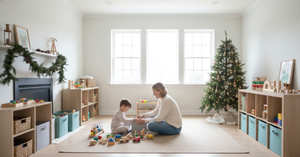
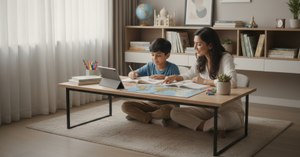
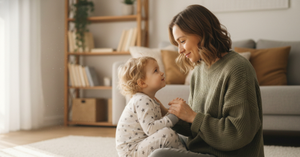
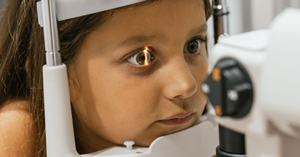
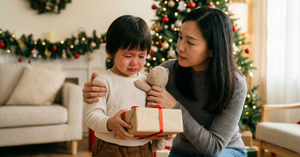
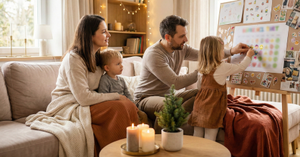
Be the first one to comment on this story.